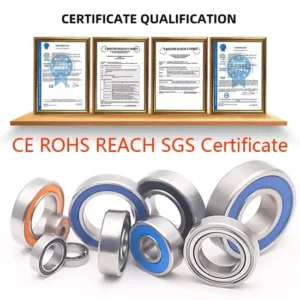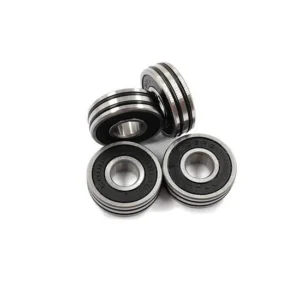Ultimate Guide to Preventing Catastrophic Wheel Bearing Failures: Expert Tips & Informational Resources
This comprehensive guide aims to provide you with expert tips and valuable information to prevent catastrophic wheel bearing failures. By understanding the causes, symptoms, and preventive measures, you can ensure the longevity and safety of your vehicle's wheel bearings. Let's delve into the essential aspects of this guide to help you make informed decisions.
Understanding Wheel Bearings
Wheel bearings are critical components that support the weight of the vehicle and allow the wheels to rotate smoothly. They are subjected to high loads and speeds, making them prone to failure if not properly maintained. To understand wheel bearings better, let's explore their key characteristics:
| Parameter |
Description |
| Load Capacity |
Wheel bearings are designed to support specific load capacities, which vary depending on the vehicle type and wheel size. |
| Speed Rating |
Wheel bearings have a speed rating that indicates their ability to handle high rotational speeds without failure. |
| Material |
Wheel bearings are typically made of high-quality steel or alloy materials to ensure durability and resistance to wear. |
Common Causes of Wheel Bearing Failures
Several factors can contribute to wheel bearing failures. Identifying these causes is crucial in preventing catastrophic failures. Here are some common causes:
- Improper Installation: Incorrect installation of wheel bearings can lead to misalignment and excessive wear.
- Lack of Maintenance: Regular maintenance, including lubrication and inspection, is essential to prevent wheel bearing failures.
- Contaminated Environment: Exposure to dirt, moisture, and debris can accelerate wear and lead to failure.
- Excessive Loads: Overloading the vehicle beyond its capacity can put excessive stress on the wheel bearings.
Identifying Wheel Bearing Failure Symptoms
Recognizing the symptoms of wheel bearing failure is crucial for timely intervention. Here are some common signs to watch out for:
- Noise: Unusual noises, such as humming, growling, or grinding, coming from the wheel area can indicate a failing wheel bearing.
- Looseness: If the wheel feels loose or wobbly, it may be a sign of a failing wheel bearing.
- Braking Issues: Squealing brakes or a pulsating brake pedal can be caused by a failing wheel bearing.
Preventive Measures to Avoid Catastrophic Failures
Implementing preventive measures can significantly reduce the risk of catastrophic wheel bearing failures. Here are some essential steps to consider:
- Regular Maintenance: Schedule regular maintenance checks, including lubrication and inspection, to ensure the wheel bearings are in good condition.
- Proper Installation: Ensure that wheel bearings are installed correctly by a qualified professional.
- Use High-Quality Parts: Invest in high-quality wheel bearings and related components to ensure durability and reliability.
- Monitor Environmental Conditions: Keep the wheel bearings clean and dry to prevent contamination and wear.
- Load Management: Avoid overloading the vehicle to reduce stress on the wheel bearings.
Expert Tips for Wheel Bearing Maintenance
Following expert tips can further enhance the longevity and performance of your wheel bearings:
- Use the Right Lubricant: Choose a high-quality lubricant specifically designed for wheel bearings to ensure optimal performance.
- Inspect for Signs of Wear: Regularly inspect the wheel bearings for signs of wear, such as cracks or excessive play.
- Replace When Necessary: If you notice any signs of failure, replace the wheel bearings promptly to prevent catastrophic damage.
Real-World Case Studies
Here are a few real-world case studies showcasing the importance of wheel bearing maintenance:
- Case Study 1: A commercial truck driver noticed unusual noises and vibrations while driving. After inspecting the wheel bearings, it was discovered that they were severely worn and needed replacement. Prompt action prevented a potential catastrophic failure.
- Case Study 2: A car owner ignored the humming noise coming from the wheel area, which turned out to be a failing wheel bearing. The car eventually experienced a complete wheel bearing failure, leading to a costly repair and potential safety hazards.
Conclusion
In conclusion, preventing catastrophic wheel bearing failures requires a proactive approach. By understanding the causes, symptoms, and preventive measures, you can ensure the longevity and safety of your vehicle's wheel bearings. Regular maintenance, proper installation, and expert tips are key to avoiding costly repairs and potential accidents. Remember to consult the Ultimate Guide to Preventing Catastrophic Wheel Bearing Failures: Expert Tips & Informational Resources for further guidance.
Keywords
Wheel bearing failures, preventive measures, maintenance, expert tips, catastrophic failures, wheel bearing maintenance, real-world case studies




